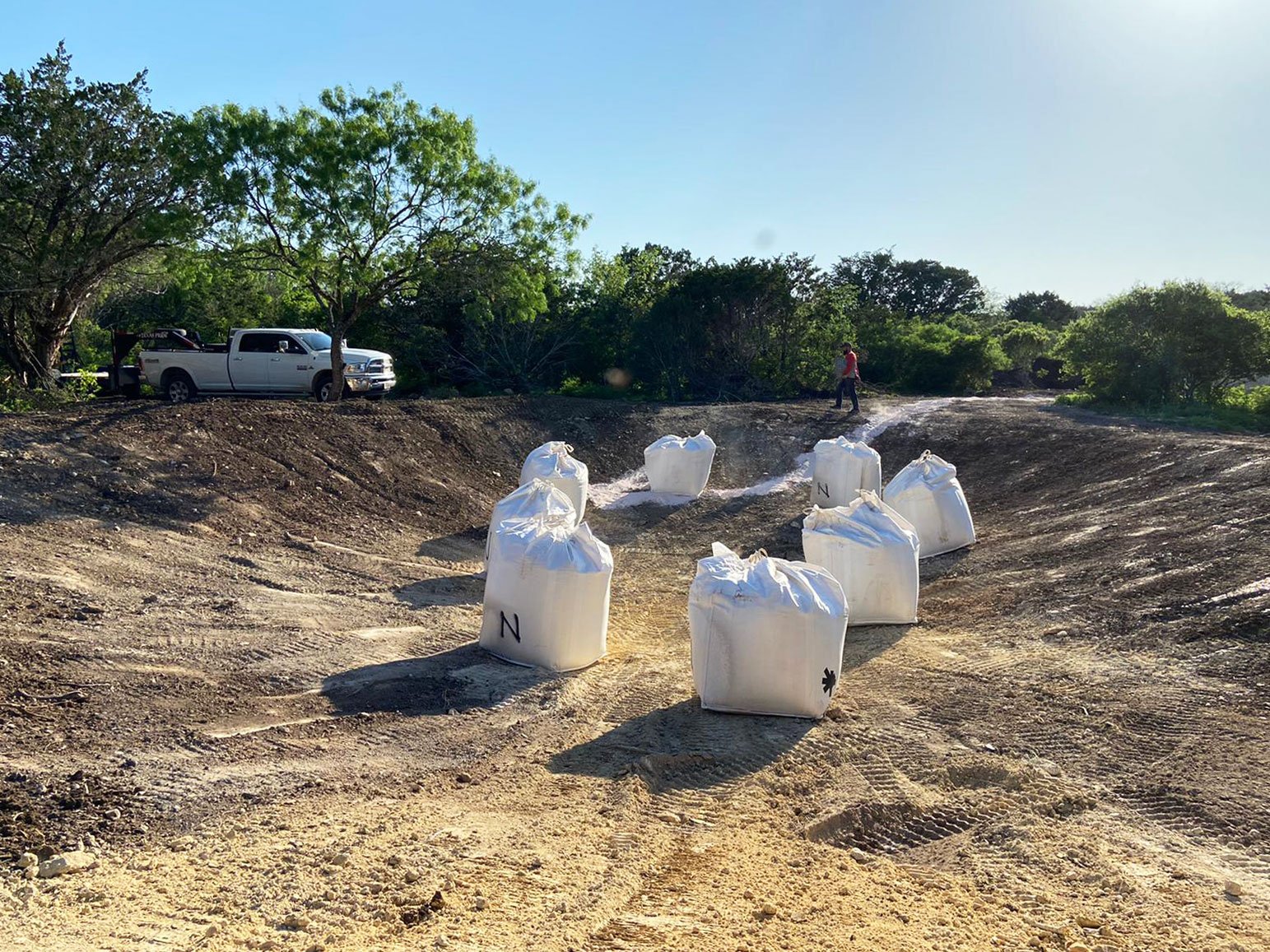THE SPRINKLE METHOD FOR BENTONITE APPLICATION
The sprinkle method is the least commonly used method for bentonite application. That’s because due to particle dispersion, it usually requires a higher bentonite per square foot ratio than the other bentonite application methods.
However, the sprinkle method is the one that should be used when the pond cannot be drained. If for any reason it isn’t possible to drain the pond, you can still use bentonite to reduce water seepage and seal water leaks.
It requires the use of granular bentonite, which is still sodium bentonite but pulverized at a different grain size.This helps ensure the bentonite grains reach the bottom of the pond and “filter” themselves into any gaps, holes or crevices at the bottom surface.
Depending on the size of the pond, there are a couple different ways to apply the sprinkle method. When possible a slow and steady approach is taken, slowly depositing the bentonite particles on the surface of the water. When the pond is too big to ensure every corner is sprinkled with bentonite, the application is done with a pneumatic trailer, attempting to get the bentonite evenly over the surface of the water body.


